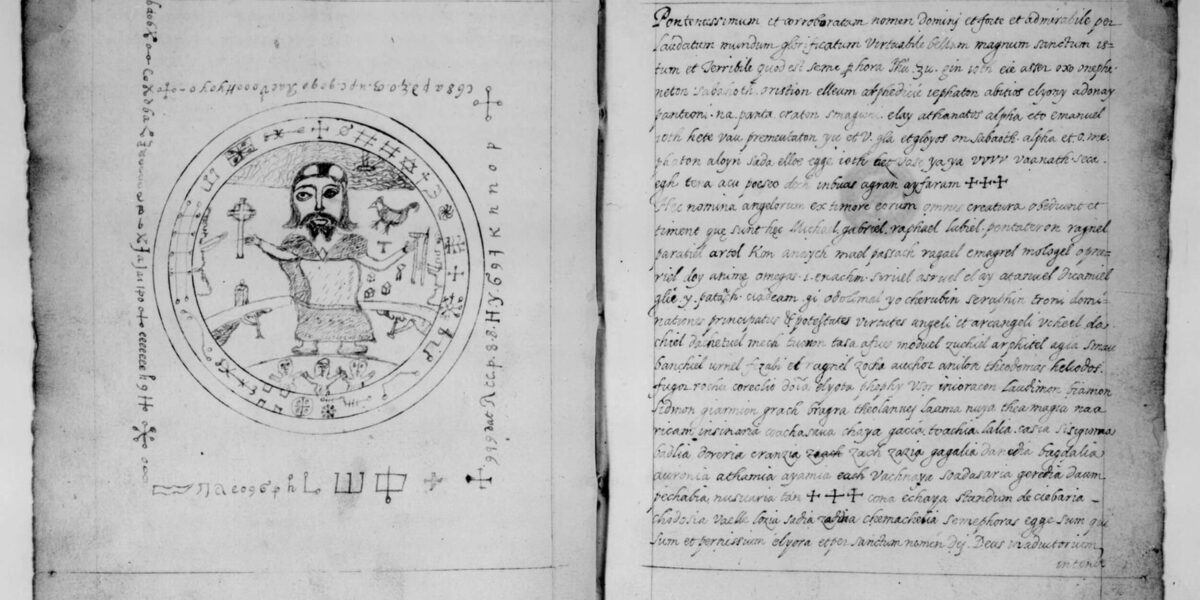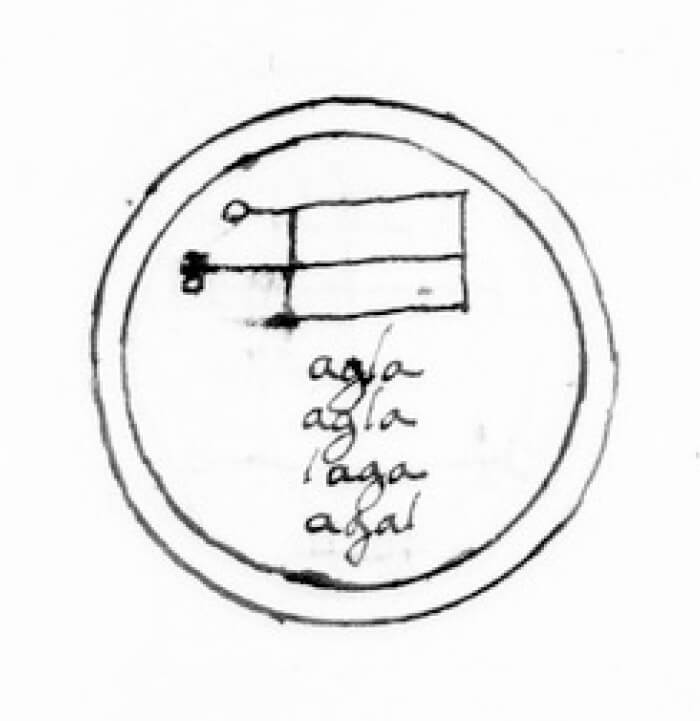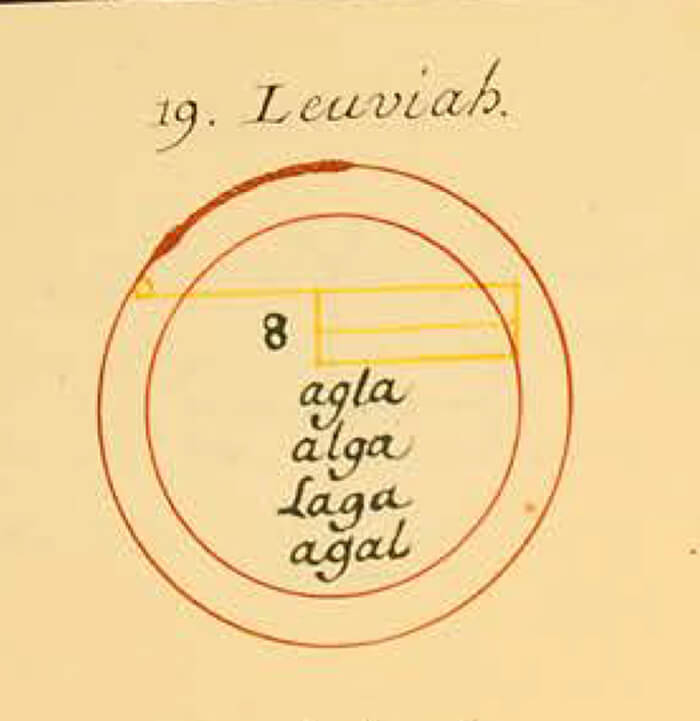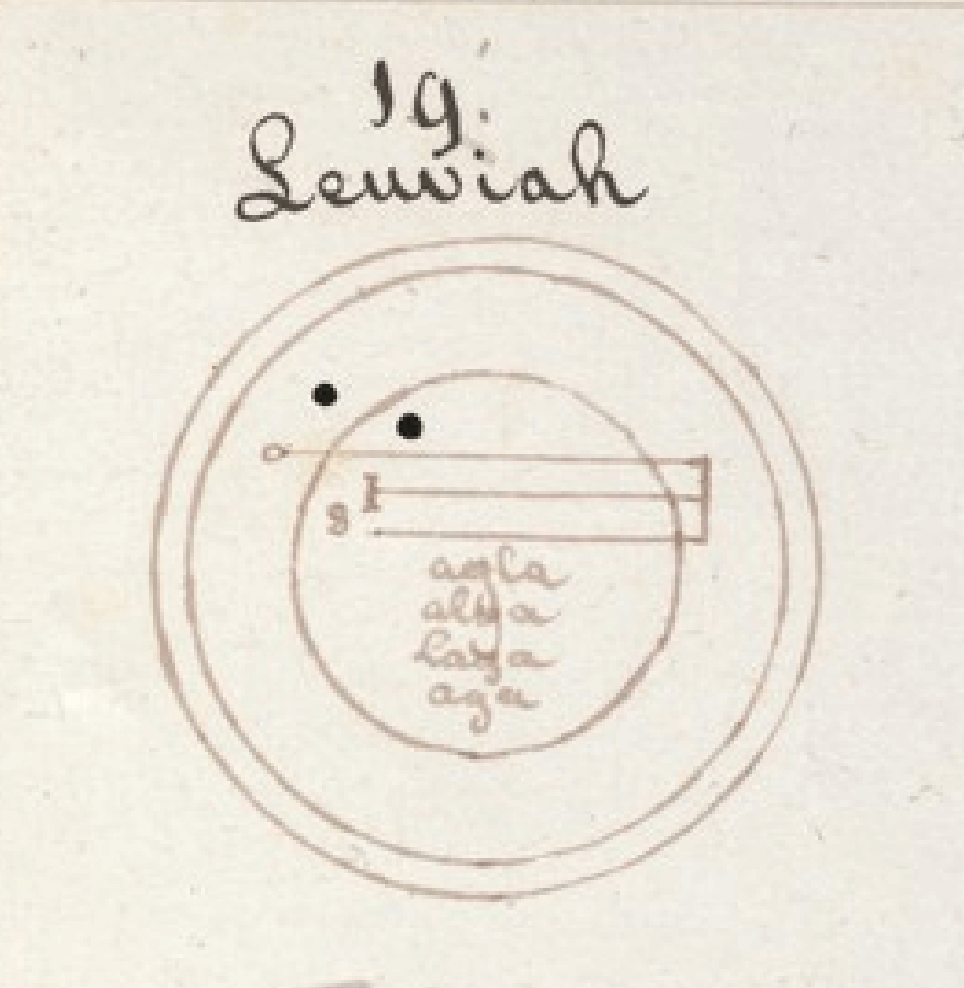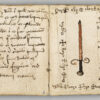by Toz Graecus, 16th-18th C
BnF Lat. 15127 | BnF Lat. 18510 | BnF Lat. 14075 | Sloane-3847
This Key of Solomon family mentions Toz Graecus who is said to have received the secrets from King Solomon. The title typically contains the phrase “secretis secretorum‘ (‘Secret of Secrets’). They have the same format as the Abraham Colorno Text-Group with two books of about thirty total chapters but with no traditional pentacles section.
These manuscript contain what should be considered the oldest Key of Solomon content. A example of this is Lat. 18510 which shares much of the same content with the earliest known Key of Solomon manuscript, Compilazioni di vari trattati latini d’astrologia, necromanzia, magia, medicina, ecc, ca. 1446. I have added this manuscript below for comparison.
Lat. 18510 and Lat. 15127 randomly assign Candaries (Pentacles) to the 72 angels of the Shemhamforash however the manuscripts from the ‘Secret of Secrets’ text-Group (i.e. Le secret des secrets, autrement la clavicule de Salomon, ou le veritable grimoire – RSL 210 N 37) add a corresponding angel name to each. Many of these manuscripts, although forming their own family of texts, also mention Toz Graecus including RSL 210 N 37 and Wellcome 4662 whose ‘Secrets of Secrets’ they are attributed. I have added two such manuscript in the ‘Related’ section below for comparison.
‘Toz Graecus’ vs. ‘Secret of Secrets’ Pentacles:
Who is Toz Graecus?
Many variations of the name, Toz Graecus, have appeared in magical texts since the medieval period. De universo by William of Auvergne (1231-36) refers to him as Toz le Grek (Toz the Greek). Lynn Thorndike suggests that this name is a corruption of Thoth ie. Hemes Trismegistus, the Greek god of wisdom, writing, hieroglyphs, science, magic, art, judgment, and the dead. Trithemius cites Toez Graecus (Toz the Greek) in his Antipalus Maleficiorum (written in 1508.) Sloane 3847, one of the earliest known editions do the Key of Solomon (1572), is attributed to Ptolomy the Grecian, yet another corruption of the same name. To the contrary, Graziella Federici Vescovini has suggested that “Toz” derives from the Arabic “Ta’us” which translates to “Peacock” in English based on the usage of the name in the famous Arabic grimoire, Picatrix. In Mathers preface to his translation of Clavicula Solomonis he presents the introduction from Additional MS. 10862, which tells a story of one Iohe Grevis being among a group of Babylonian philosophers that were determined to restore the sepulcher of King Solomon. Upon digging up the tomb, they found the Key of Solomon sealed in an ivory casket (as Solomon had instructed his son Roboam to bury with him). However, none of these men could comprehend it until Iohe Grevis implored them to beseech the Lord for guidance. He was granted the presence of an angel, and subsequently his desire to understand the book. Grillot de Givry (Witchcraft, Magic & Alchemy, 1931, p. 103) cites him as Tozgrec which is no doubt, a condensed version of Toz Graecus. The list goes on…
The Manuscripts
Below are the major Key of Solomon manuscripts that are categorized in the ‘Toz Graecus’ Text-Group. In addition, I have added other Toz Graecus attributed works. One such work is titled, la Veritable Magie Noire (or ‘The True Black Magic’) which is an early printed edition of the Key of Solomon by one, Iroé-Grego. There are only 2 known editions, both dated 1750 but printed in ca. 1790 and ca. 1830 respectively. Below is the ca. 1790 edition.
(References: Joseph Peterson, Stephen Skinner & David Rankin, Colin Campbell, Grillot de Givry, Lynn Thorndike.)


